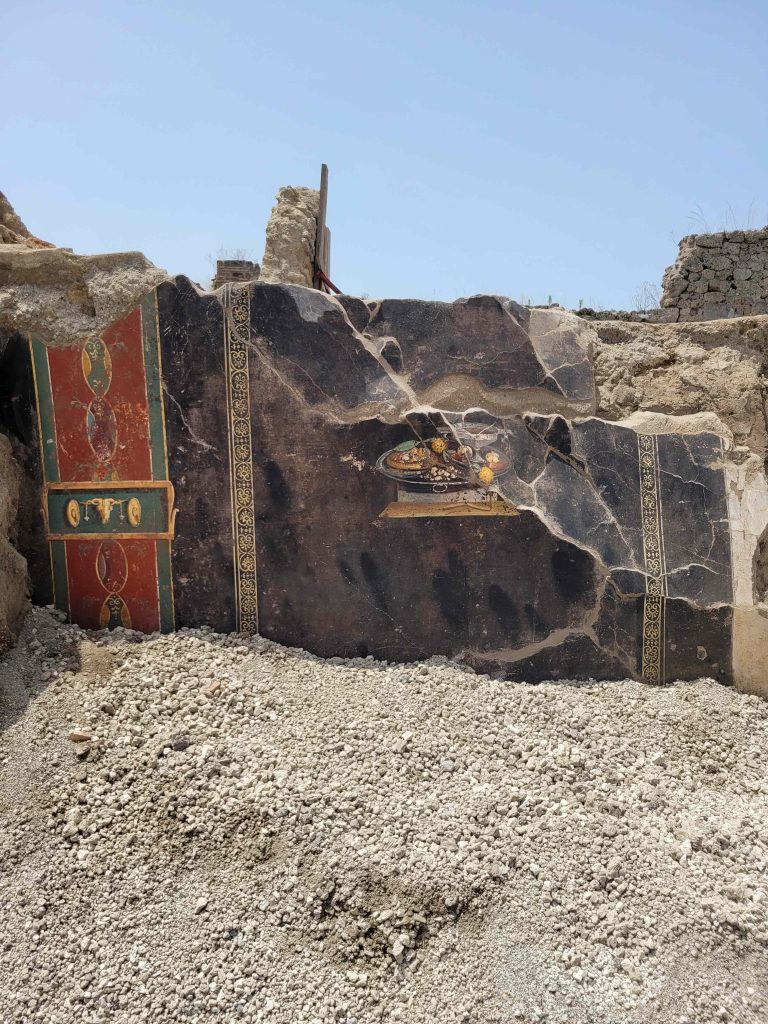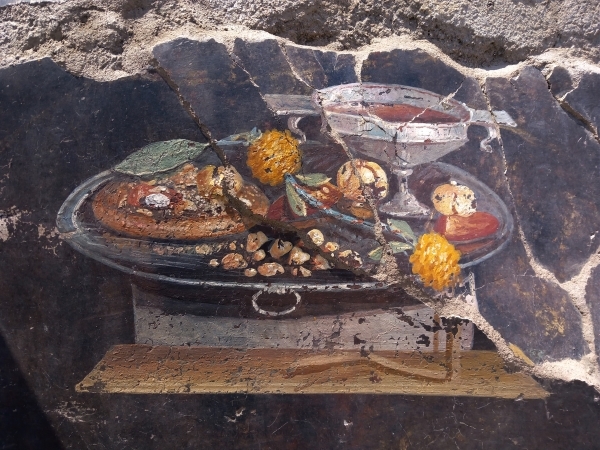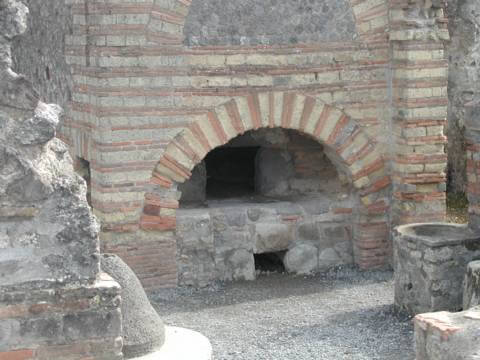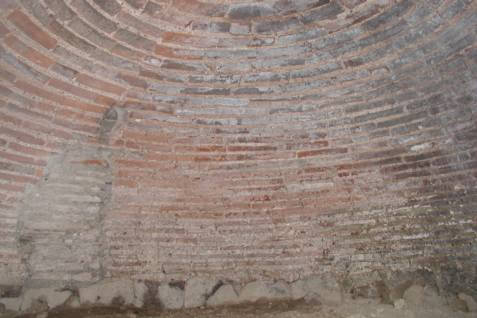
Newly Recovered Fresco from Ancient Pompeii Shows an Early Form of Pizza
Jul 31, 2023Posted by Forno BravoBack in 1888 and 1891, a team of excavators began to clear ash and debris from a building in the ruins of ancient Pompeii, the Italian town buried, and then preserved, by the eruption of Mount Vesuvius in 79 CE.
In January, 2023, another team went back to that same spot and continued the original team’s work. In the large atrium next to a building housing a brick oven (a bakery), they uncovered a beautiful fresco clearly showing what looks to be a precursor to pizza. Experts think it represents the gifts given to guests in traditional hospitality rituals of the time. Just imagine! This topped flatbread was enjoyed over 1700 years before pizza was officially invented in Naples (just 17 miles away!)

Wide view of the atrium wall where the fresco was discovered. – Photo from Archaeological Park of Pompeii

Excavating the inula 10 of the Regio IX in Pompeii, Italy – Photo from Archaeological Park of Pompeii
What is on the Silver Tray?
According to the archaeologists of the Archaeological Park of Pompeii, the image depicts a cup of wine placed on a silver tray. Next to it is what looks like a “flat focaccia that functions as a support for various fruits.” They can be identified as pomegranate, and maybe a date, spices, and perhaps with a type of pesto, and possibly condiments, indicated by yellow and ochre dots. Additionally, “on the same tray, dried fruits and a garland of yellow strawberry trees are present next to the dates and pomegranate.”

Close Up of the Newly Discovered Fresco – Photo from Archaeological Park of Pompeii
Why is it Not Considered Pizza?
Tomatoes and mozzarella are considered key toppings for pizza, according to the VPN (Vera Pizza Napoletana) guidelines and the UNESCO World Heritage Designation for pizza (awarded in 2017.) The absence of tomatoes can be explained because tomatoes didn’t come to Italy from South America in the 1500’s and were not common fair until the 19th century. Cheese had been around since the 1st century, but buffalo milk cheese is known to have existed in Campania in the 12th century, but the term mozzarella only appeared in the 16th century. This cheese became popular in the late 18th century.
“In ancient Pompeii, we already knew that there were forms of flatbread, made with grains, water, salt, and maybe beer as a leavening agent,” reports Gino Sorbillo, owner of one of the oldest pizzerias in Naples. Foccacia breads were common, and literature of the time says they were used as hand-held “tables” for other ingredients, as well as being eaten themselves, much as they were shown in the fresco.
Brick Ovens of Pompeii
Previously, several domed brick ovens were discovered in Pompeii (over 33 in various conditions and stages of repair). The Pompeii ovens were often used inside shops, which also served as retail stores. The pizza ovens were well-shaped, well-insulated, well-vented, and beautifully built. The floor was made from tempered terracotta tiles. about 2″ thick, and the dome was a round, spherical shape. The neighborhoods where the ovens were located were also home to food shops, which had insulated terracotta trays for serving both hot food and cold drinks. They often had a window where bread could be passed through to the street or the courtyard. (Note: The lack of a window by the oven that found near the fresco, and the oven’s size, leads experts to believe it was a commercial bakery, not a retail or home one.)

Ancient Pompeii Brick Oven

Interior of an Ancient Pompeii Brick Oven
Extra Resources
Learn more about the original Pompeii Ovens HERE
Get Forno Bravo’s free DIY brick oven plans based on these original designs HERE
Learn more about our modern oven kits HERE
Learn more about the Archaeological Park of Pompeii HERE





